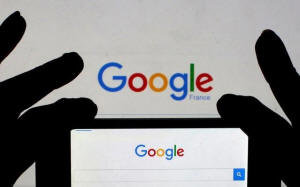|
Google success in U.S. schools forces
Microsoft, Apple to scramble
 Send a link to a friend
Send a link to a friend
 [May 03, 2017]
By Julia Love [May 03, 2017]
By Julia Love
SAN FRANCISCO (Reuters) - Microsoft Corp's
announcement of a suite of new education products on Tuesday shows the
company's determination to reverse a major shift that has taken place in
U.S. classrooms in recent years: for most educators and school
districts, Google's Chromebook is now the computer of choice.
The Chromebook has gone from a standing start in 2011 to wild popularity
in the market for education technology, which tech companies have
traditionally viewed as a critical way to win over the next generation
of users.
In 2016, mobile devices running Alphabet Inc's Google’s Chrome operating
system accounted for 58 percent of the U.S. market for primary and
secondary schools, according to Futuresource Consulting.
The Microsoft products introduced Tuesday, including a new version of
its Windows operating system, software to boost collaboration among
students and a new Surface laptop, clearly show the influence of the
Chromebook, industry watchers say.
“The success of the Chromebook has awakened sleeping giants,” said Tyler
Bosmeny, CEO of Clever, an education technology company. “There’s so
much investment into the space – it’s unlike anything I’ve ever seen.”

For years after the release of the Chromebook in 2011, Apple Inc and
Microsoft stuck to their strategies of offering slightly modified and
discounted versions of their products for educators.
But the Chromebook's low price--it starts at $149-- and easy management
proved irresistible to many schools. Google also saw a key chance to
expand its market share several years ago with the approach of an online
testing mandate in the United States.
To capitalize on the opportunity, the company created a “test mode,”
which restricts access to the rest of the web while students complete
assessments, said Rajen Sheth, a senior director of product management
at Google.
The preparations paid off: Sales of the Chromebook jumped tenfold
between 2012 and 2013, Sheth said.
While Google manufactures some Chromebooks, the devices aimed at the
education market are supplied by partners such as Samsung Electronics Co
Ltd and Acer Inc. The operating system is free for educators and
hardware manufacturers, and Google sells schools an education package
including device management and support for a $30 fee.
For Microsoft, Tuesday's event was the culmination of a campaign to
emulate key aspects of the Chromebook strategy, said Mike Fisher,
associate director for the education division at Futuresource
Consulting.
[to top of second column] |

A woman holds her smart phone, which displays the Google home page,
in this picture illustration taken February 24, 2016. REUTERS/Eric
Gaillard/Illustration/File Photo

Microsoft's hardware partners are now selling hybrid tablet-laptop
devices based on the Surface design starting at $189. Microsoft
executives boasted that the operating system announced Tuesday boots
up rapidly, a hallmark of the Chromebook.
The company also introduced a new code-builder addition to its
Minecraft education edition to help students learn coding skills
through the popular game.
For Microsoft, the test will be how easily it can explain its
offering to educators, Fisher said.
“The Google education ecosystem is quite straightforward," he said.
"With Microsoft, there’s a lot of moving parts."
Microsoft declined to comment.
Apple, for its part, has lowered the price of the iPad to $299 for
education customers and made it possible for students to share
devices, in addition to simplifying management.
“It’s about trying to reach every teacher and every student,” said
Susan Prescott, a vice president of product management and marketing
at Apple.
Despite Google’s U.S. dominance, its position is weaker in
classrooms overseas, where many markets have not yet seen an impetus
to embrace technology en masse, said Fisher of Futuresource
Consulting.

In 2016, devices running Android and Chrome made up 23 percent of
the mobile market outside the United States, compared with 65
percent for Microsoft’s Windows, according to Futuresource.
(Reporting by Julia Love in San Francisco; Additional reporting by
Stephen Nellis; Editing by Jonathan Weber and Lisa Shumaker)
[© 2017 Thomson Reuters. All rights
reserved.]
Copyright 2017 Reuters. All rights reserved. This material may not be published,
broadcast, rewritten or redistributed. |